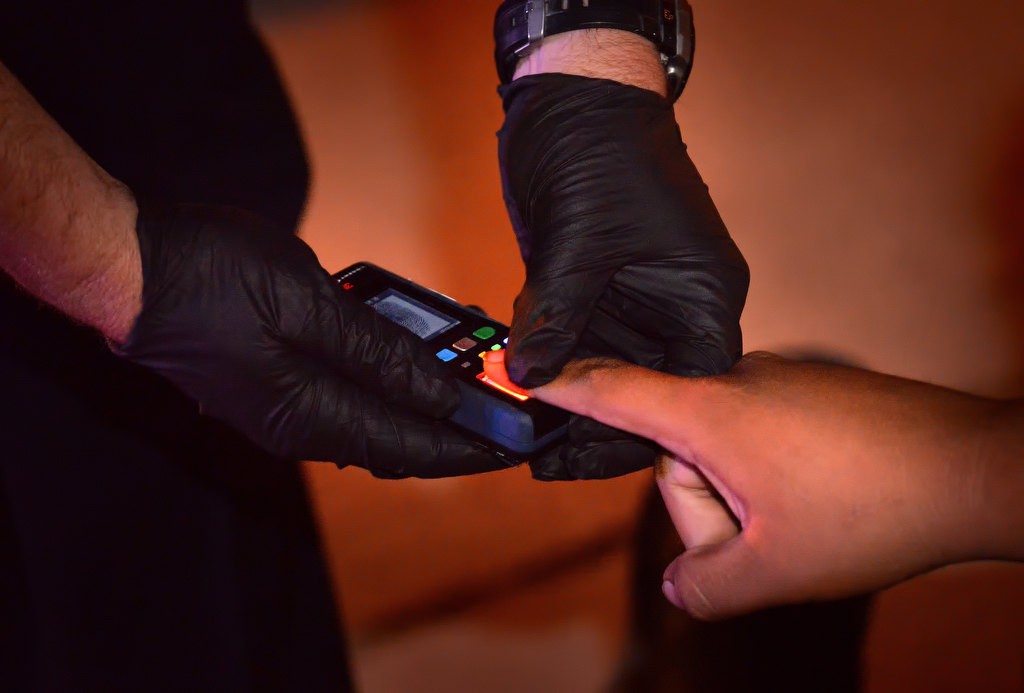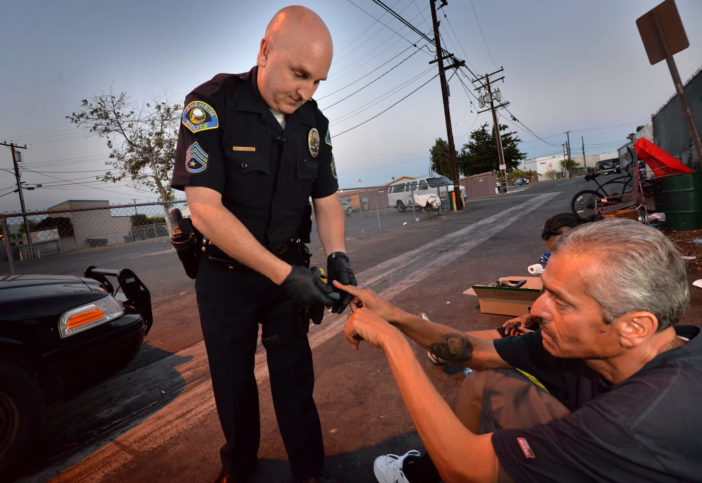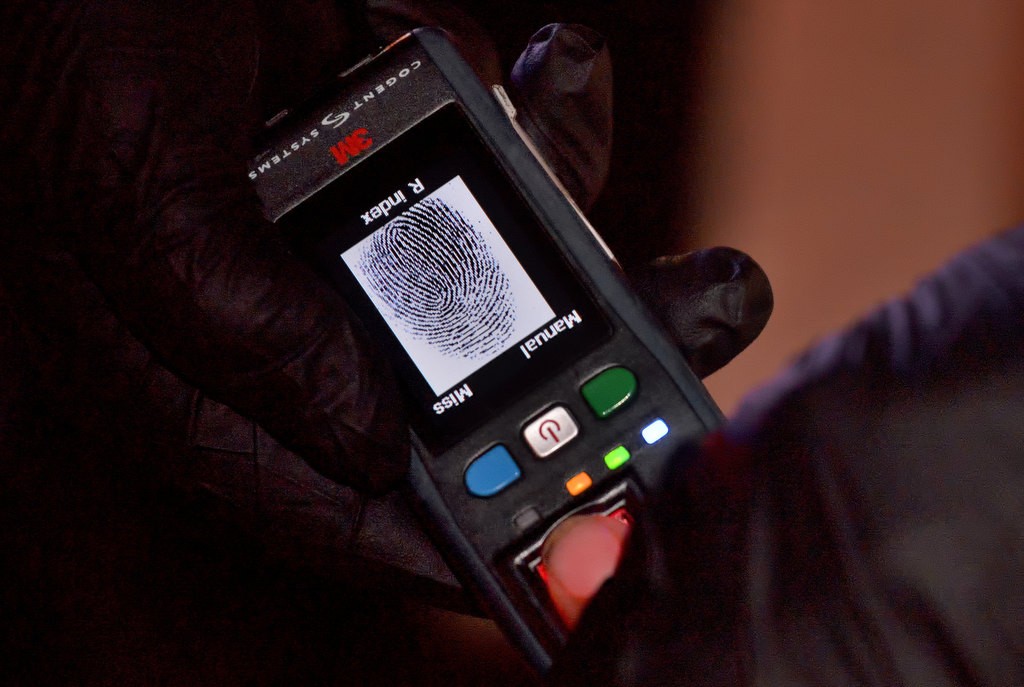Responding to a suspicious person call, the Anaheim Police officer asked the suspect for his name. Nothing came up on a records check.
The officer used fingerprinting device BlueCheck to help identify the man. With the suspect’s correct name and birthdate retrieved through BlueCheck, the officer found an arrest warrant out for the man. The suspect admitted to the officer that he’d been stopped by police 10 times before, but had never been identified.
It’s just one of many success stories relayed by APD patrol officers using the cell-phone-sized device by 3M Cogent to help ID suspects, missing juveniles and even the deceased.
“Sometimes officers don’t want to give it up when they leave patrol,” says Starr Campos, an APD office specialist in forensics who coordinates and checks out the device to officers, as well as offers training for it.

Anaheim PD’s Sgt. Mark Lillemoen sends a fingerprint to be checked against multiple databases using a custom laptop while still on the location of a call.
Photo by Steven Georges/Behind the Badge OC
To use the device, the suspect places his two index fingers on the scanner. The digital image is run through Anaheim’s database (including both city employees and arrested individuals), the state’s Department of Justice database (also including employees and arrests) and the FBI’s Repository for Individuals of Special Concern (including wanted persons, sex offenders, known or suspected terrorists and persons of special interest). The process takes about two minutes and the officer receives the information on his vehicle’s computer.
“We’re the only police department in Orange County that has BlueCheck,” says Campos.
As such, the APD is often called out by other agencies in the county requesting BlueCheck assistance to help identify suspects. APD has 71 BlueChecks, with 52 out in patrol and the remainder used by officers in other positions, including community policing or special units.
Sgt. Mark Lillemoen, who has the device permanently in his possession to assist officers on patrol, says he gets called out for a BlueCheck call from once a week to once a night. He says it can really come in handy in some misdemeanors that don’t require an arrest.

A portable digital fingerprint scanner is used on the location of a call to double check the ID of someone being questioned.
Photo by Steven Georges/Behind the Badge OC
“We can identify them in the field hopefully and release them on a citation, as opposed to taking them in,” he says.
It’s also helpful in the courtroom because it provides an undeniable positive identification for minor violations or larger crimes. BlueCheck doesn’t replace the full set of prints done at the station for an arrest, but it helps officers ID a suspect and potentially make that arrest.
Lillemoen says several months ago a motor officer stopped a man for a traffic violation. The officer suspected the man was giving a fake name. The man’s true identity was discovered with the help of BlueCheck: It turned out he had a 10-year-old warrant out on him for child molestation.
“We were able to catch a guy … a child predator that’d been around for 10 years,” says Lillemoen.
Officer Ken Johnson, who has been using BlueCheck on patrol since the program started around five years ago, says the device isn’t used only for criminal activity. If someone has suffered a serious injury and is in a coma, for instance, the device can be used to identify the victim and notify the family.
He says he averages using the device for a variety of call types between two to three times a day.
“It’s basically using modern technology to check that fingerprint and that fingerprint has to match to somebody [if he or she is in the system]… it’s very accurate,” he says.
 Behind the Badge
Behind the Badge





